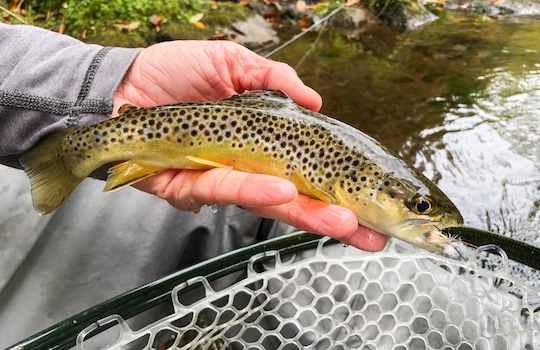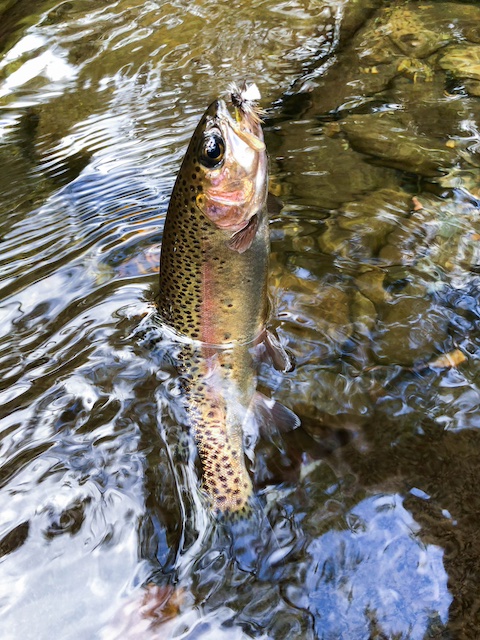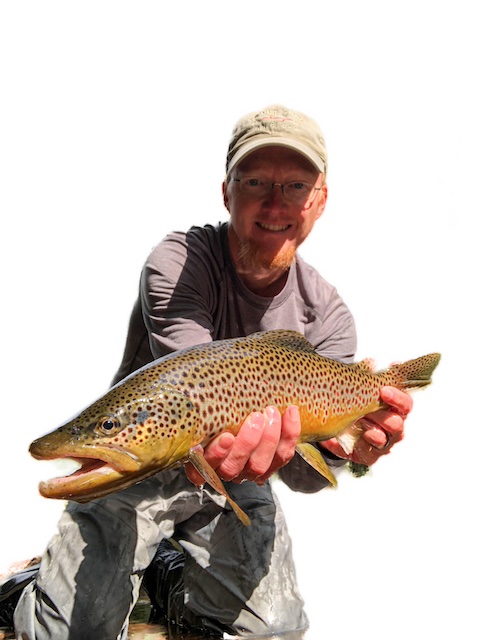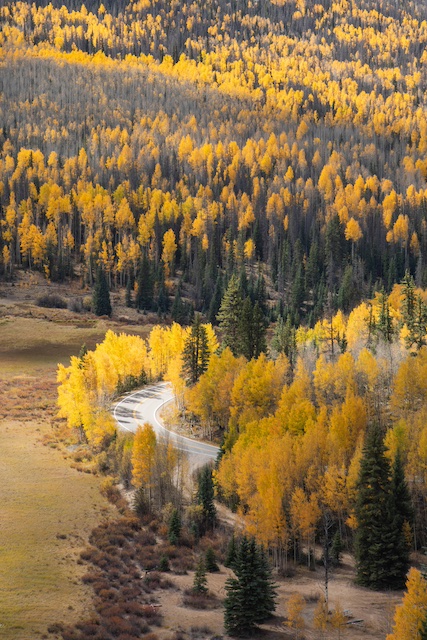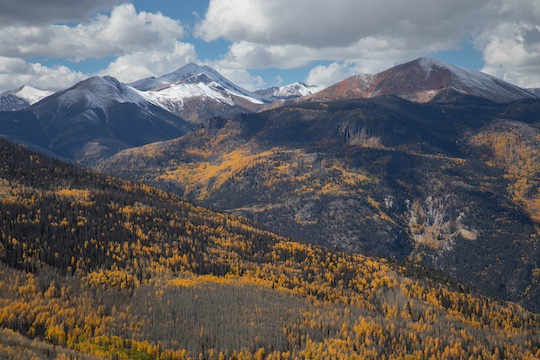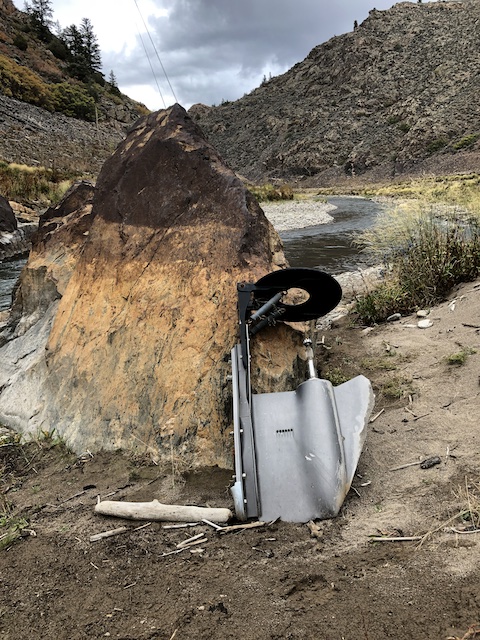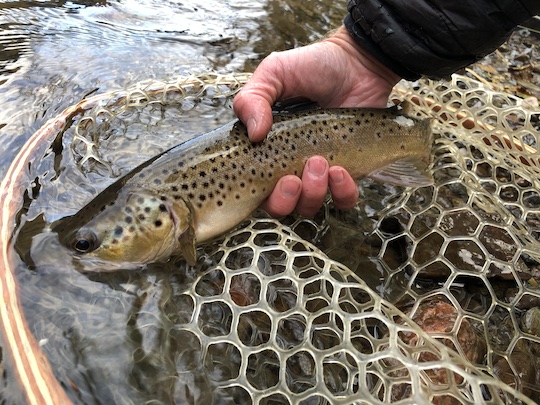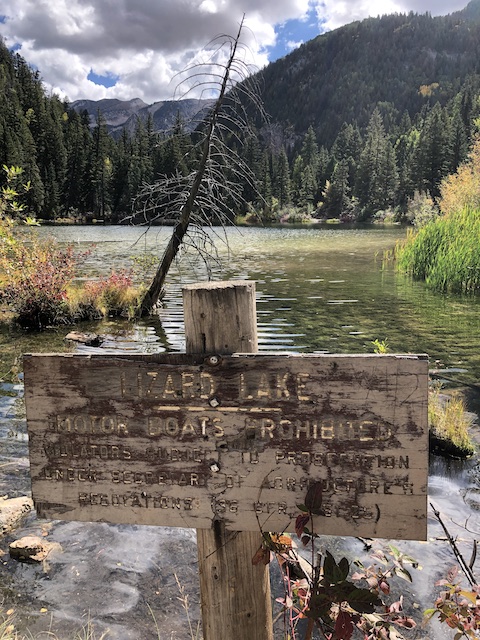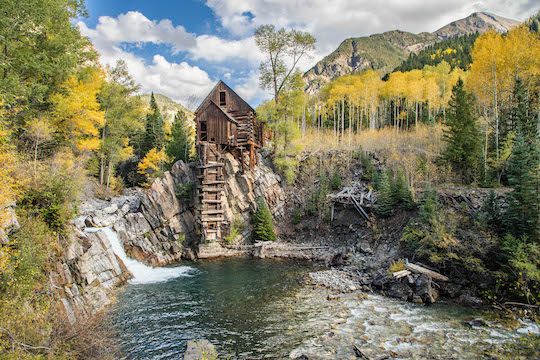Don't ever become a guide so you can fish more. If you've never heard that saying before, now you have. As a guide, you are on the water every day, fishing in a sense. You just aren't actually holding the rod. In many ways, you actually become a better angler by not fishing all the time, because you spend all day describing how to do it right. On the other hand, it would assumedly be easy to lose the passion if you're doing something every day. That is one thing for which I count myself very fortunate. I still love both my job (guiding) and fishing on my days off. Still, I have to find some way to keep things interesting. If I've already floated the Caney Fork River 75 times for the calendar year, I probably won't float the exact same section doing the exact same thing on my off day.
There are many solutions to keeping it interesting. Most of them revolve around pushing myself into new experiences as an angler. One is to experiment with flies and presentation, something I constantly do on my days off. On a recent guides' day off, I ripped streamers so hard all day that my stripping arm was my tired than my casting arm. Seriously. I saw some really big fish too and will be back to do it again. Another solution is to chase new species, explore new water, or fish rarely fished waters that still have that "shiny new toy" feel.
This past fall, in early October, a calendar anomaly opened up a short window to camp and fish in early October. Every year, I take a trip in early to mid November, so this was going to be a bonus trip. It is exceedingly rare that I get multiple days in a row off in October without scheduling it that way on purpose. As one of my busiest months, I tend to guide my way through my favorite time of year, with very little "me" time to go fishing for myself. And that's okay. My bank account appreciates it come the middle of January. Still, when back to back days opened up, I jumped at the opportunity. Wonder of wonders, one of my favorite campsites was available at Smokemont Campground, and it was booked just as fast as I could enter my payment information.
Shortly before the trip, I checked with some fishing buddies to see if anyone wanted to join. I've noticed that is much harder once all your fishing friends have young families, a point I'm also at. Still, I finally got one bite and we made plans to hit a favorite piece of water, albeit one I've only hit once or twice. This would be my first time through in the fall.
We started hiking in fairly early. It was cool enough out that I kind of wanted a jacket but knew the hike would warm me up too much. So, I just trusted my long sleeves to be enough and we headed up the trail. I did wear my Patagonia ultralight wading pants that I bought several years ago. It was too warm for hiking in full chest waders, but I didn't want to get hypothermia either. These were originally bought for backpacking waders, but I occasionally wear them for non backpacking scenarios as well. They kept me from completely overheating, but I was still glad to finally step into the cool stream at the end of our hike. There is always a transition in spring and fall where wet wading is most comfortable mid and late in the day, but the morning hours are just a little on the cool side. That isn't a problem for front country trips, but when you hike in, it is a pain in the rear to carry multiple wading setups for different times of the day. So you just make do as much as possible.
When we got in the stream, I was rigged with a dry/dropper and had high expectations. With a quick rainbow and then a brown, I thought the day was about to bust wide open. Instead, however, the fish were about like what I normally expect on Deep Creek. In other words, they would eat if you did everything just right, but any misstep or bad cast sent them running. The ultra low water didn't help. The ongoing drought conditions in the area had flows even lower than usual for an already dry time of year. Still, we found just enough fish to keep things interesting. Then, finally, as the day warmed a little, the fish really started to turn on.
A high overcast delayed the best bite later than we had expected, but things eventually got going. At this point, we were both catching fish. Dry flies and nymphs were both producing. Eventually, some streamers were even tossed to great effect. It was one of those magical days in the mountains. The autumn colors while not quite peak, were good enough to add significant value to the trip for me.
A couple of the rainbows were more memorable than the rest. While all fish are beautiful, some just stick out in my memory for one reason or another. The first one that really caught my attention had nothing to do with size. In fact, it was on the smaller end of the spectrum for the day. The neat thing about this fish was how dark it was. Occasionally, I catch fish that are super dark. Invariable, and this fish was no exception, they come out of very dark holes or from underneath rocks. I have edited this picture to actually lighten things up a little if that tells you anything.
The other memorable rainbow was a big surprise because it ate the dry fly. Not that fish on dries is surprising, of course, but when you've caught the vast majority of fish on the dropper for hours, and then a quality fish slurps the dry, it surprises you each time. The fish fought very well, but upon landing it, I can't say with 100% confidence that it is a wild fish. It might be, of course, and that is even likely. However, the line between stocked and wild on this drainage is hazy at best. Most of the fish are small enough and vibrant enough to tell, but with larger fish, I definitely start to have some questions.
Late in the trip, as we were getting ready to hike out, we found some nicer fish. Not the true monsters that we knew inhabited the stream, but solid brown trout that would make anyone's day. Then, just after catching back to back brown trout, I found one more gorgeous rainbow trout on a dry fly. Talk about a perfect ending to a perfect day. Nothing could beat this day in the mountains, or so I thought.
We got out fairly late, and eventually I made it back to camp and got some supper together. I was missing my family a little and almost drove home that evening. I decided it would be foolish to take down camp just to get home near midnight. I would be much happier and feel better if I got up and headed home in the morning. Such decisions can make or break a fishing trip, I just didn't realize it at the time. After eating chili and tortillas, I hit the sack. I slept well in the cool autumn night air and woke up refreshed.
I got camp broken down quickly and had my thoughts set on home when I thought of a favorite pool nearby. Deciding that it would be silly to drive this far without fishing it, I decided for a quick stop. No more than an hour, I thought to myself.
Wow! What an hour. In that hour, I caught several fish in the 16-19 inch range and a 22.5 inch fish as the largest of the session. It was easily my best hour long fishing experience in the Smokies for brown trout ever. Not necessarily my best day ever, but right up there in that category as well. All of which just goes to show, you don't know if you don't go. Best of all, I still got home much earlier than originally planned or anticipated. Talk about the best of both worlds!
As a guide, we are often faced with less than stellar conditions. Only rarely are things bad enough that we have to cancel a trip. On some borderline days, I'll find myself saying to the client that exact some phrase, or they'll say it to me when we decide to stick to our plans. If you aren't getting out there, you'll never know how fishing might have been. In 2024, focus on getting out more often. You never know what you might be missing out on by skipping a day on the water.
Sorry for the heavy editing on these pictures, but some of my favorite spots are pretty recognizable. I hope you'll understand that I don't want a bunch of people in "my" spot next time I'm there...


